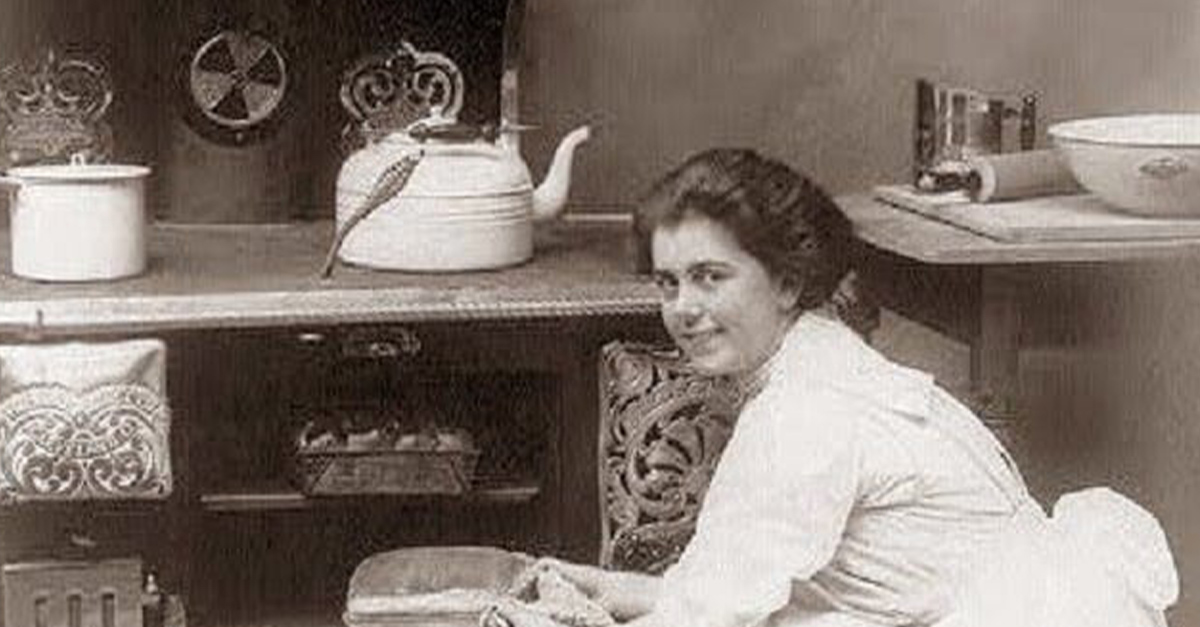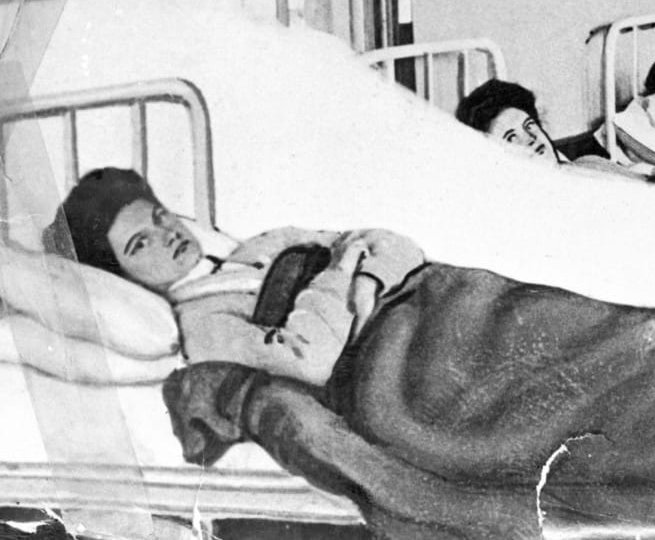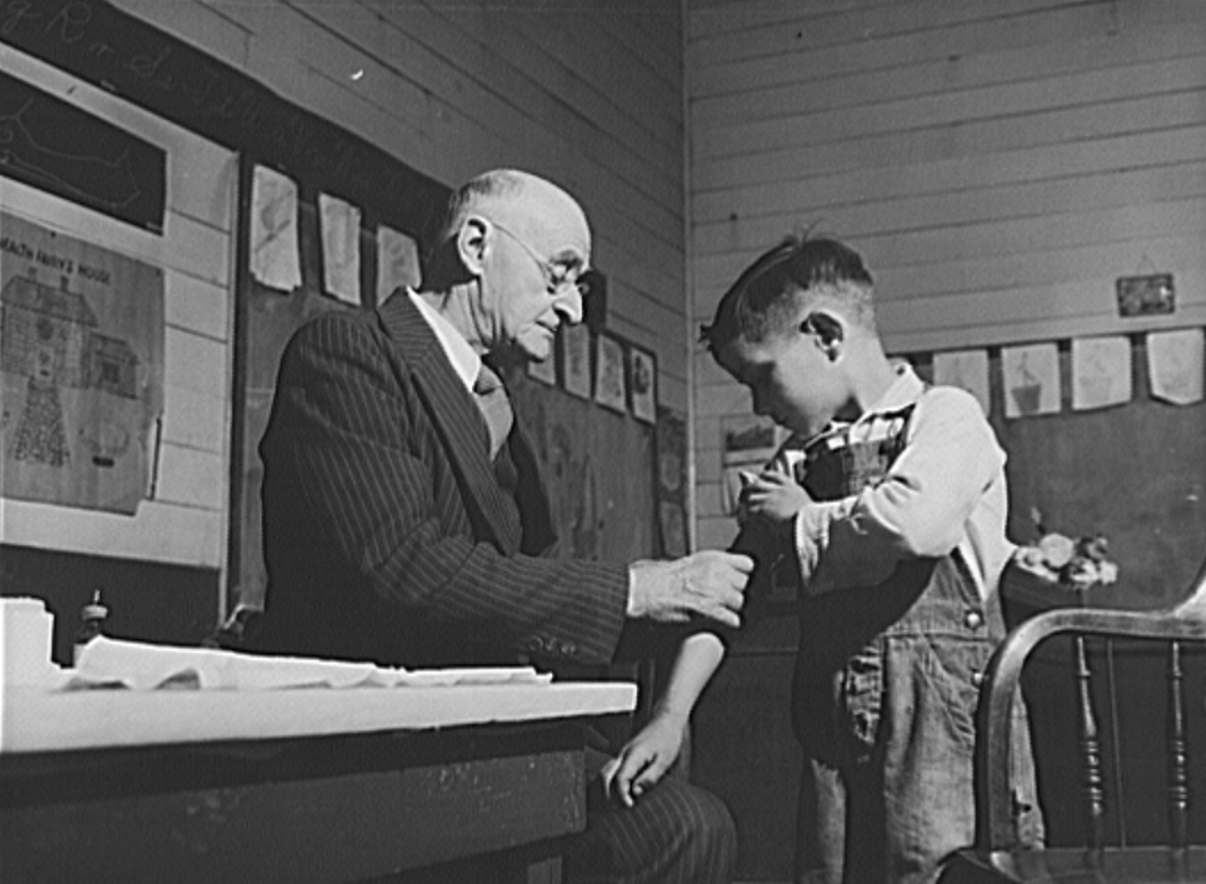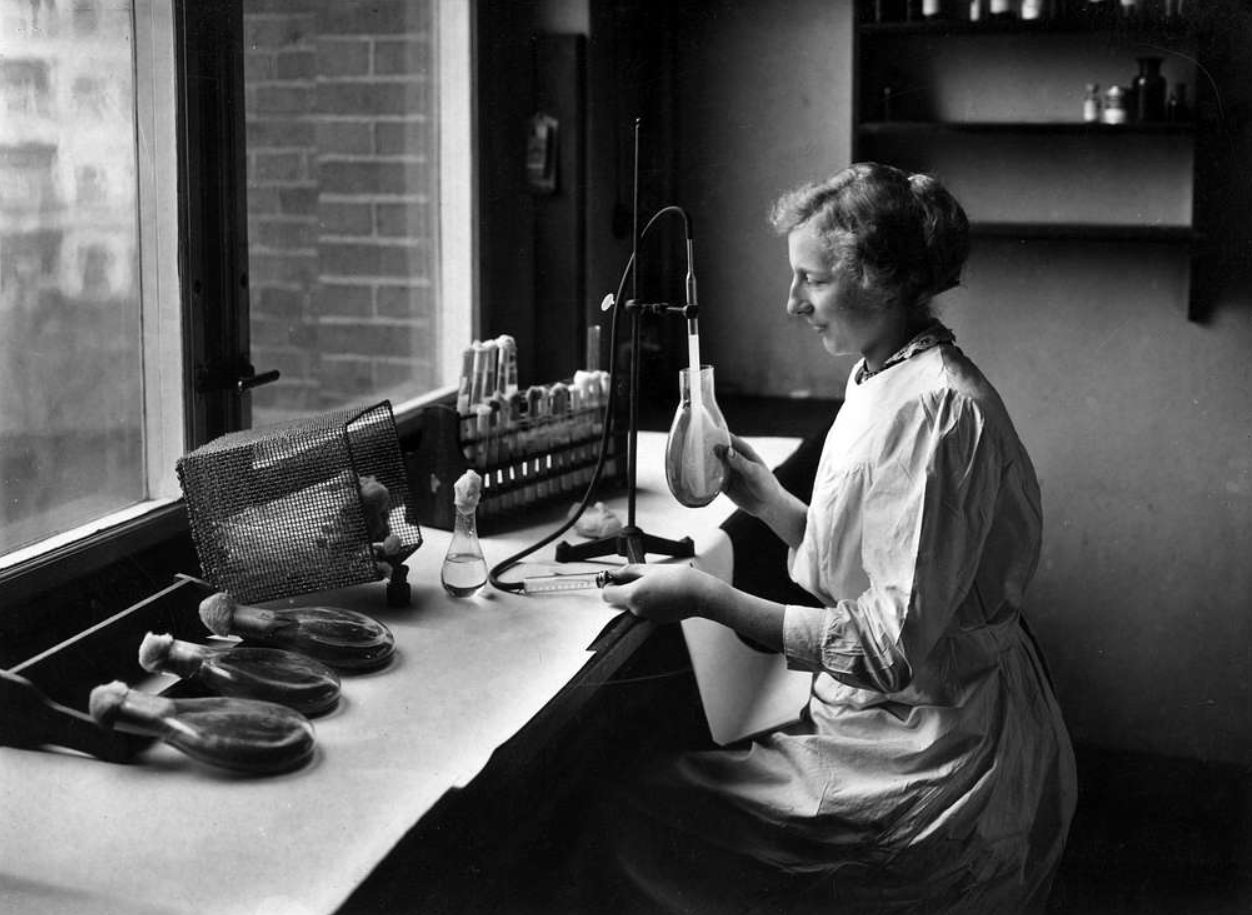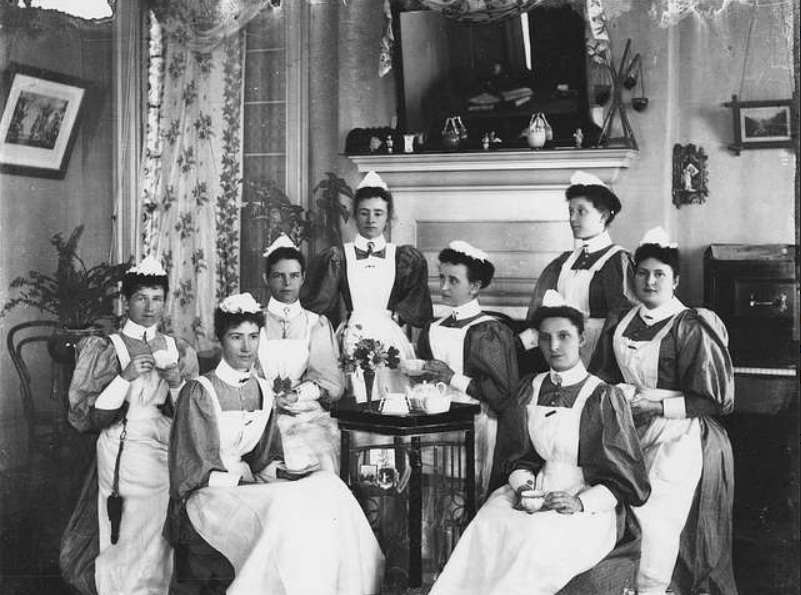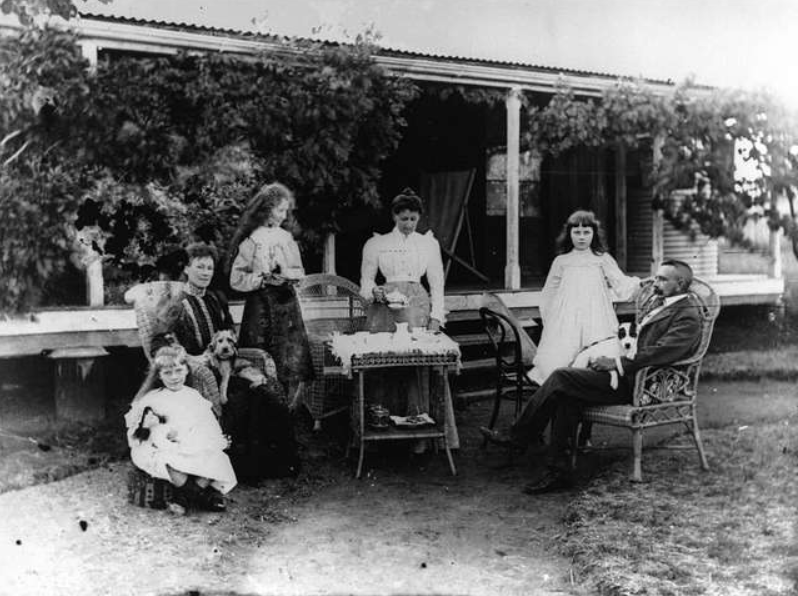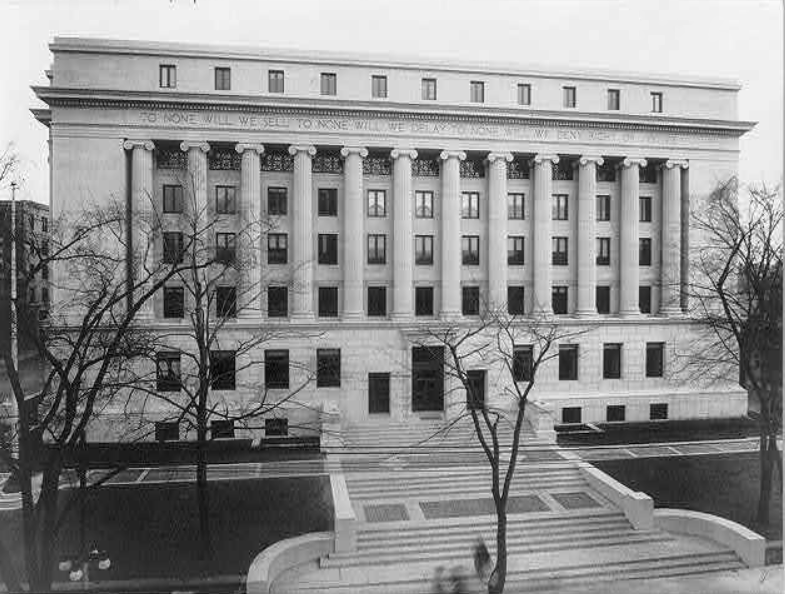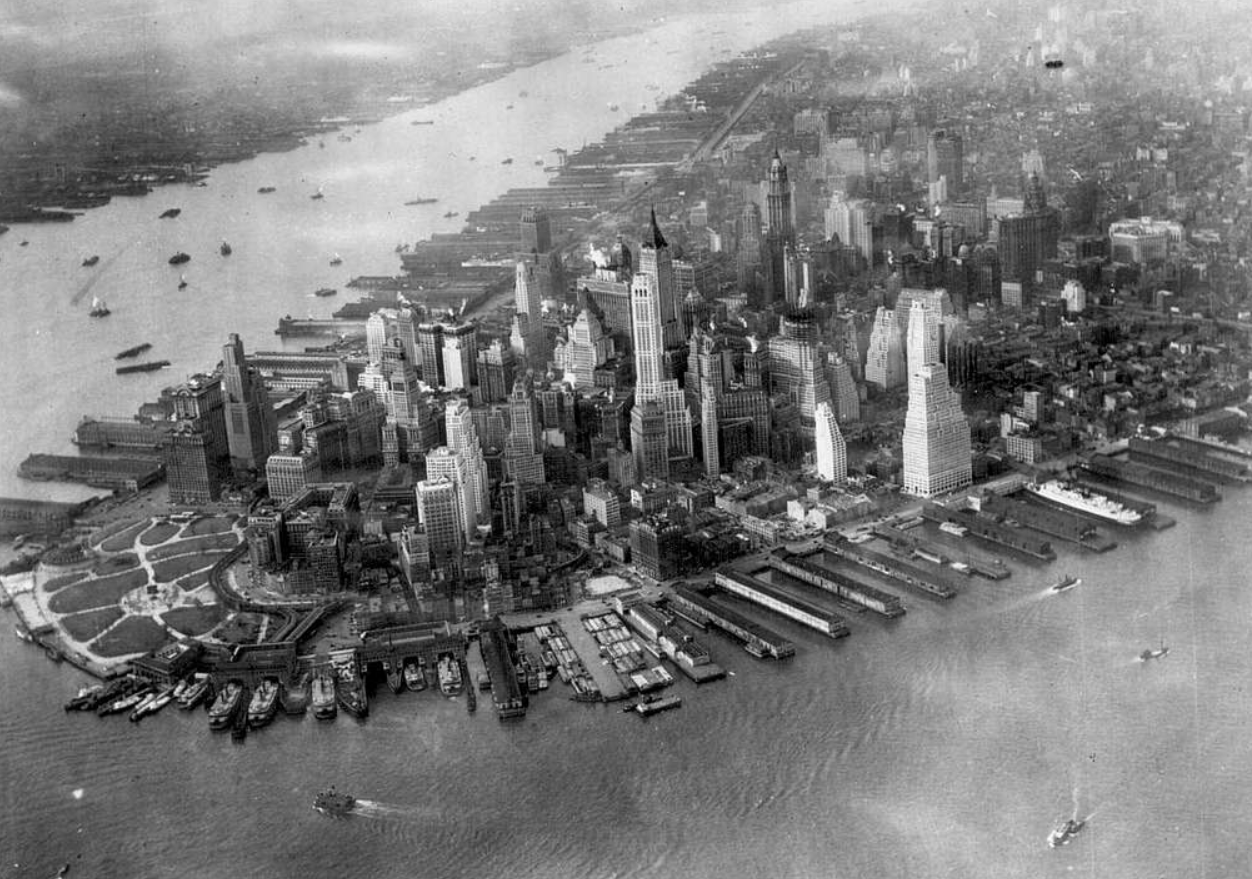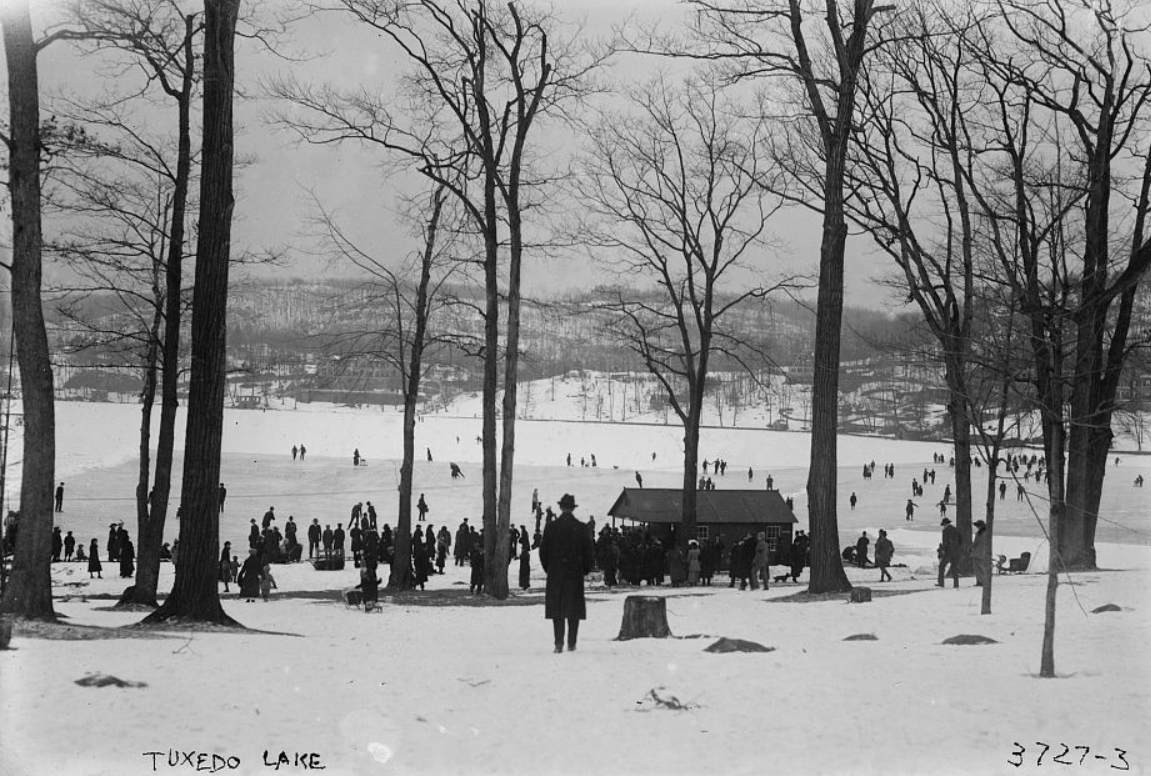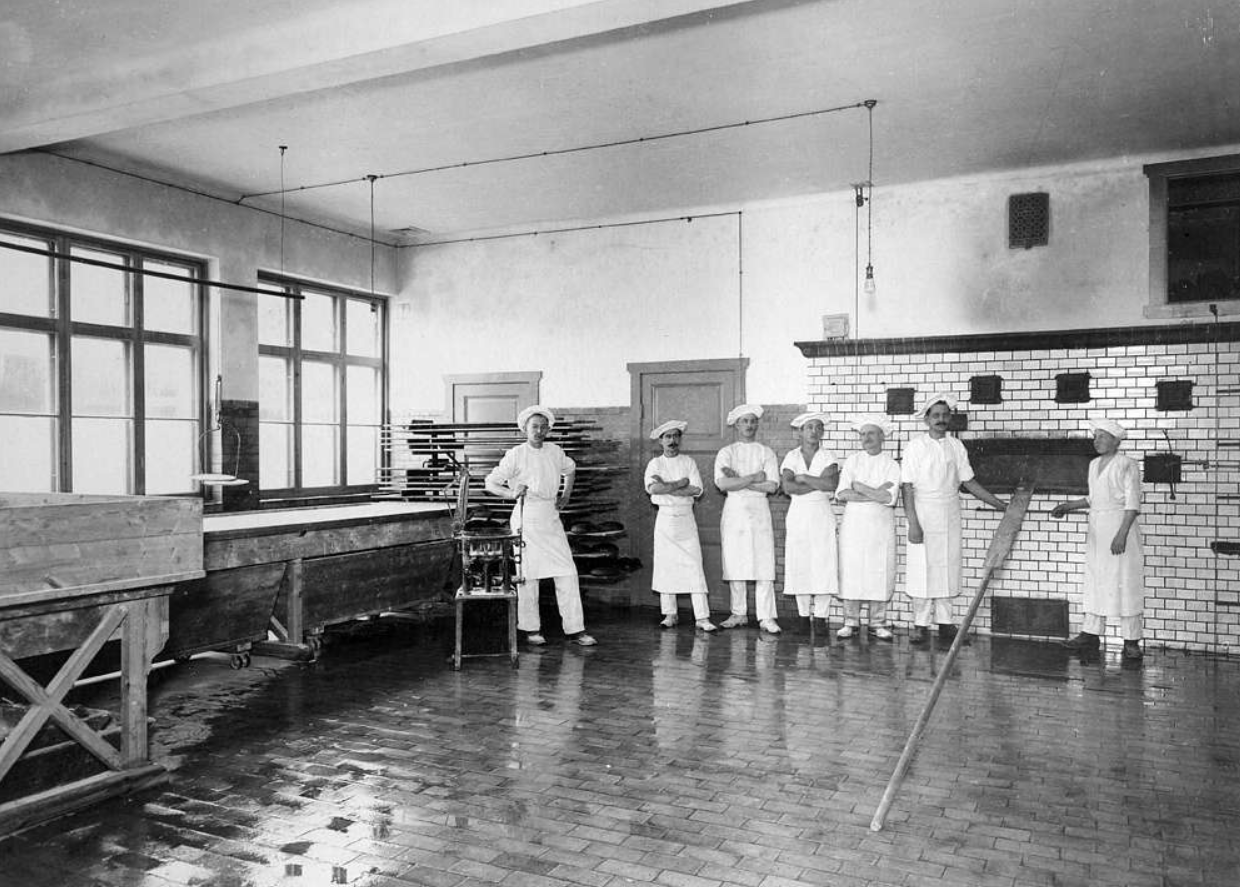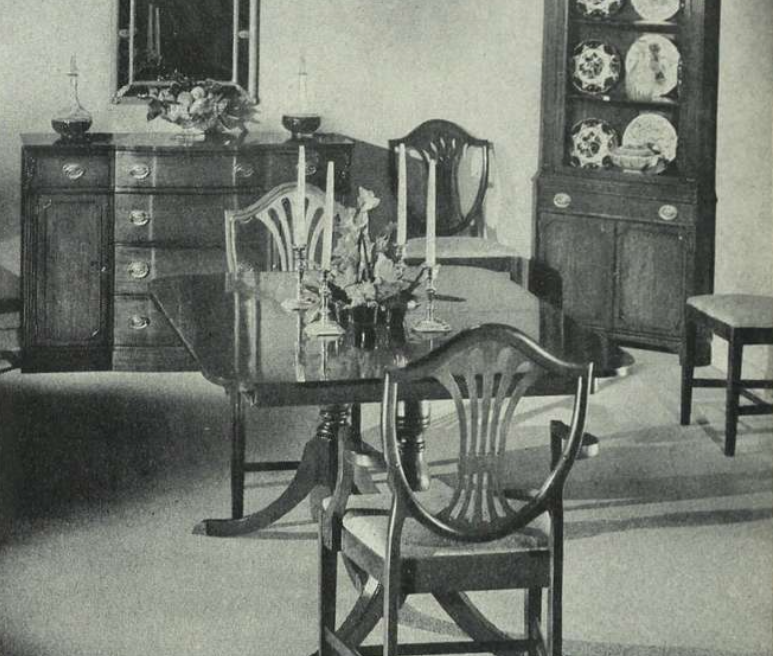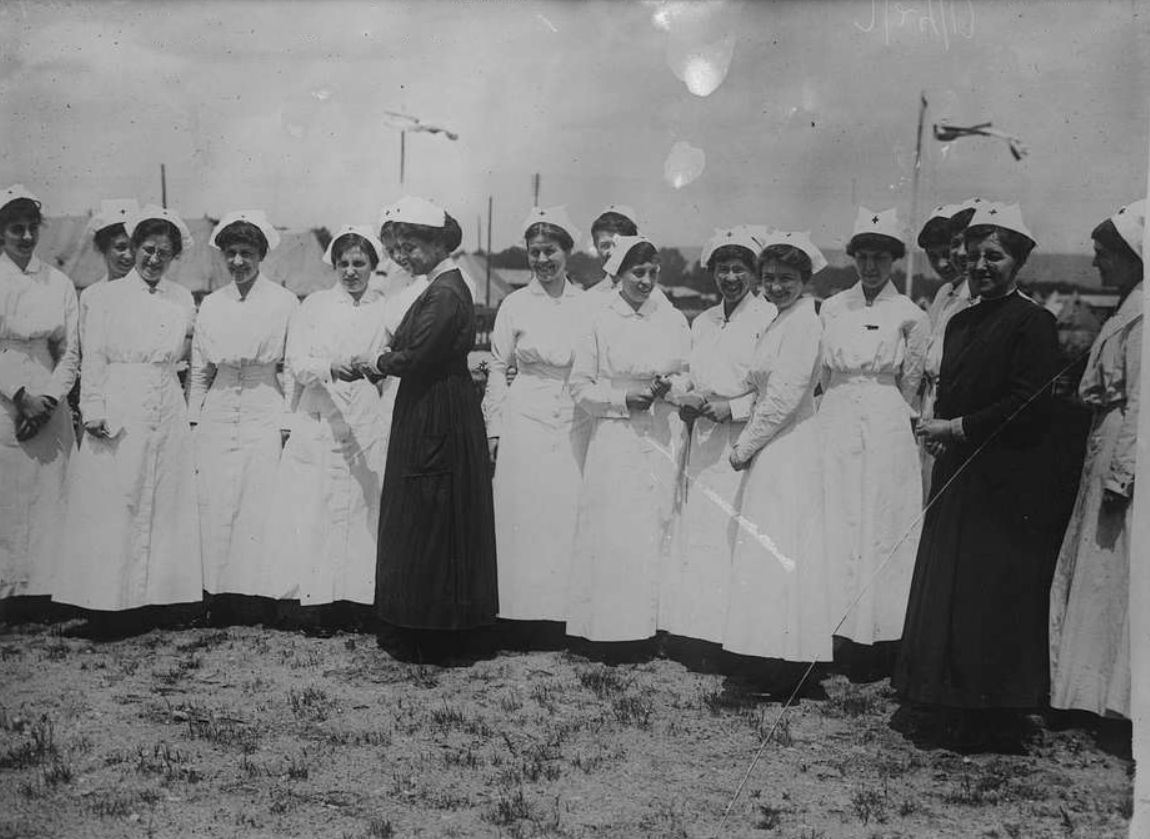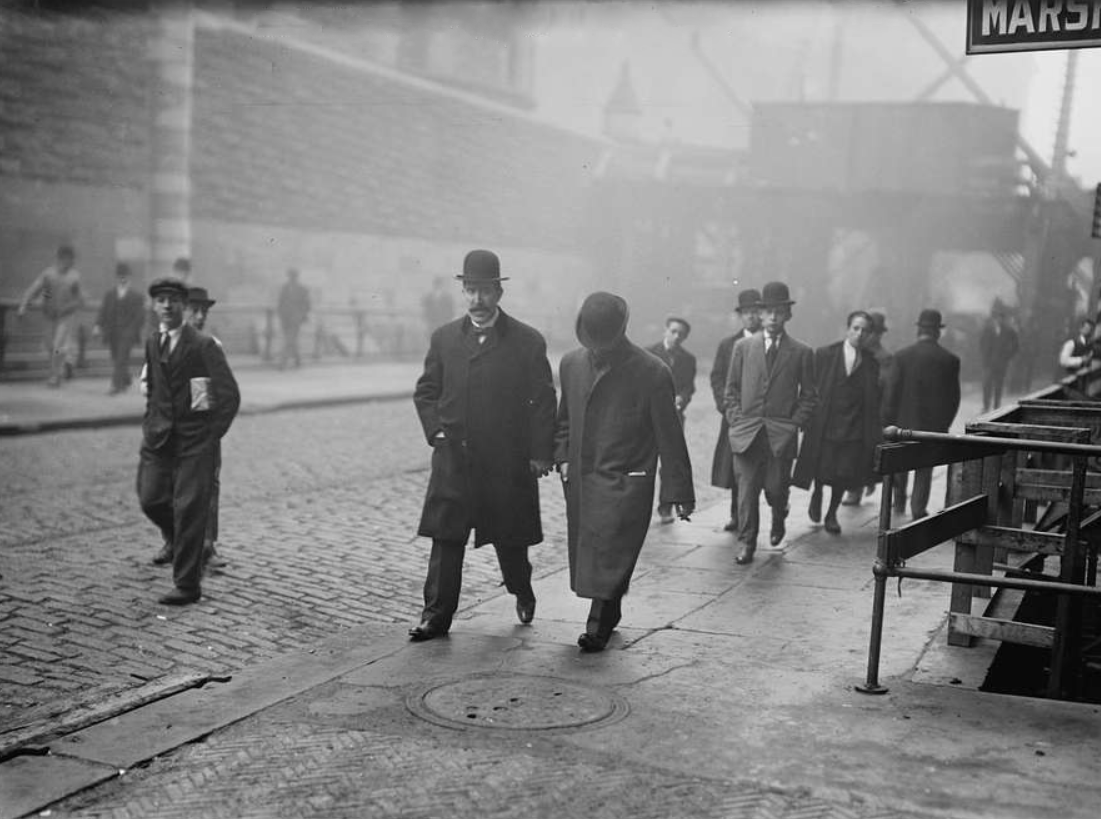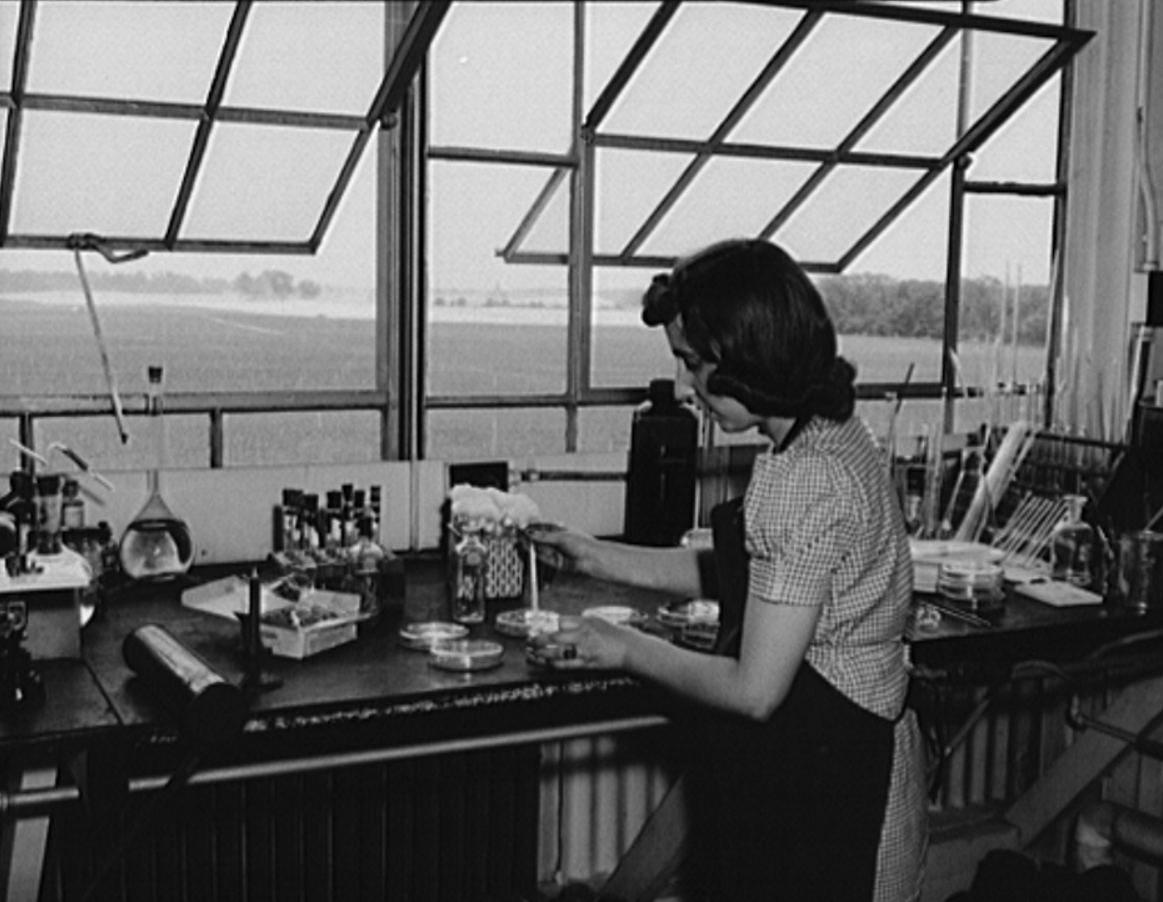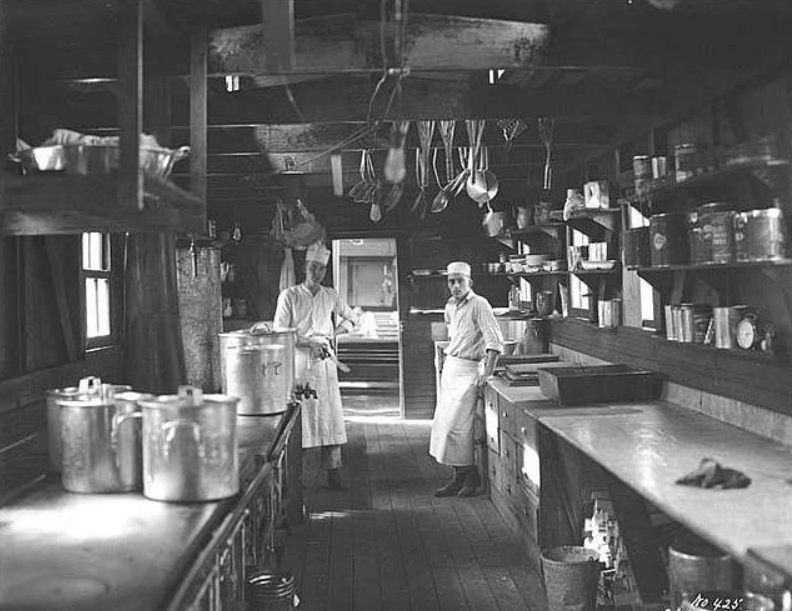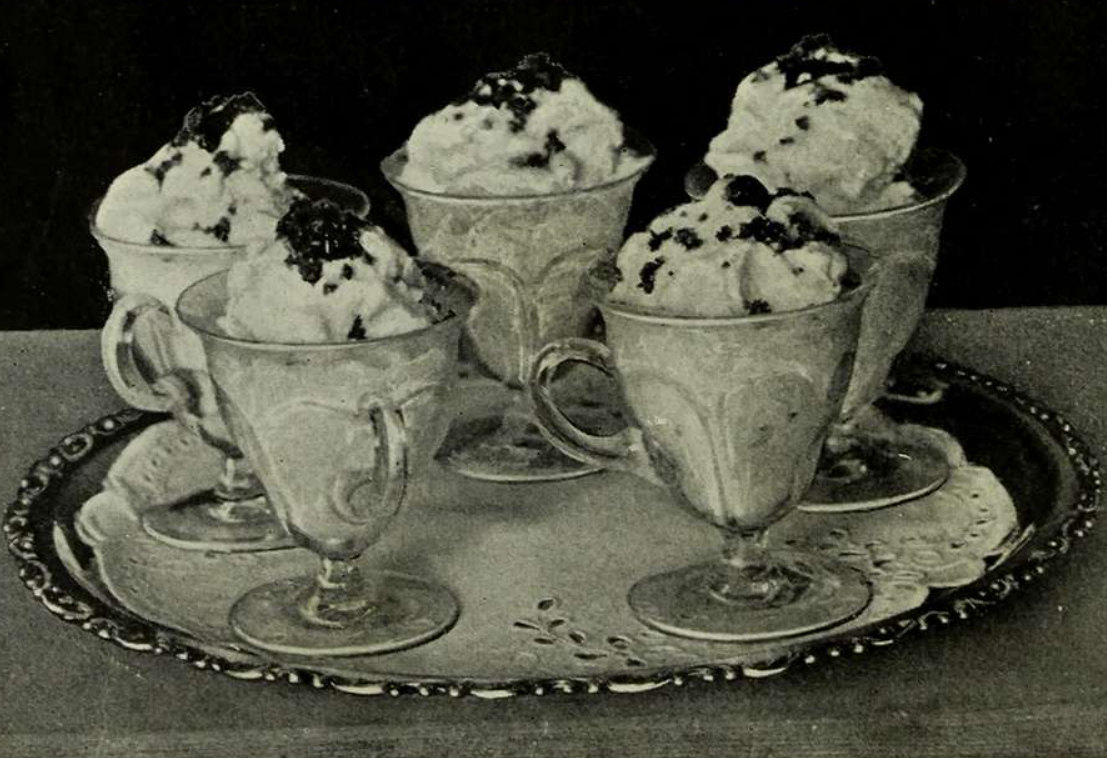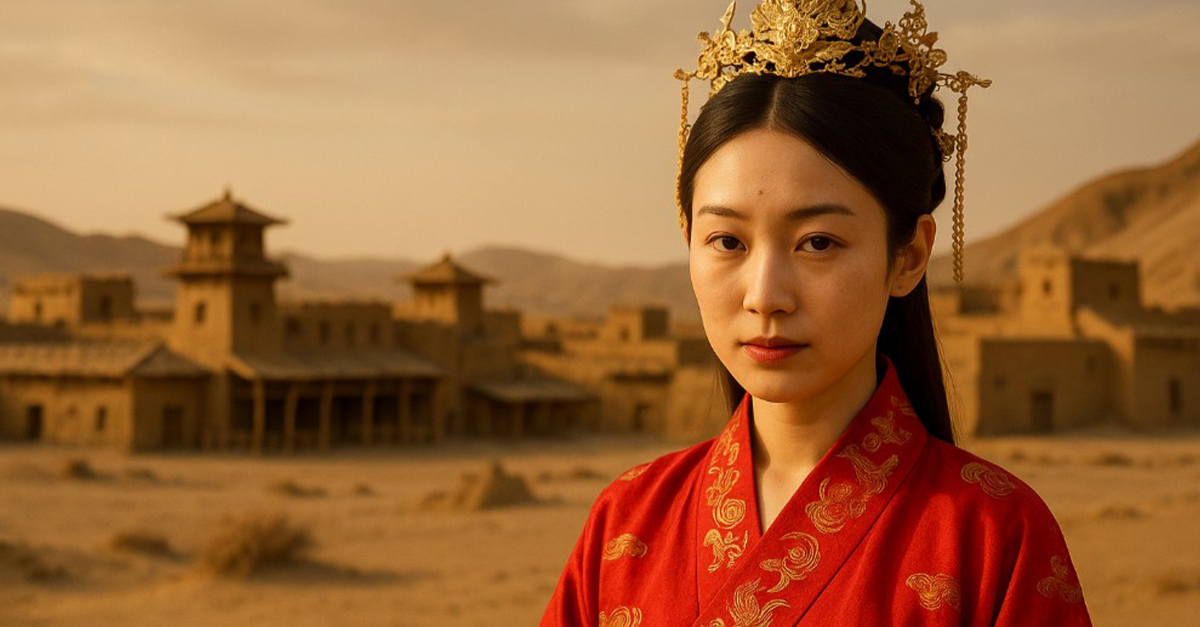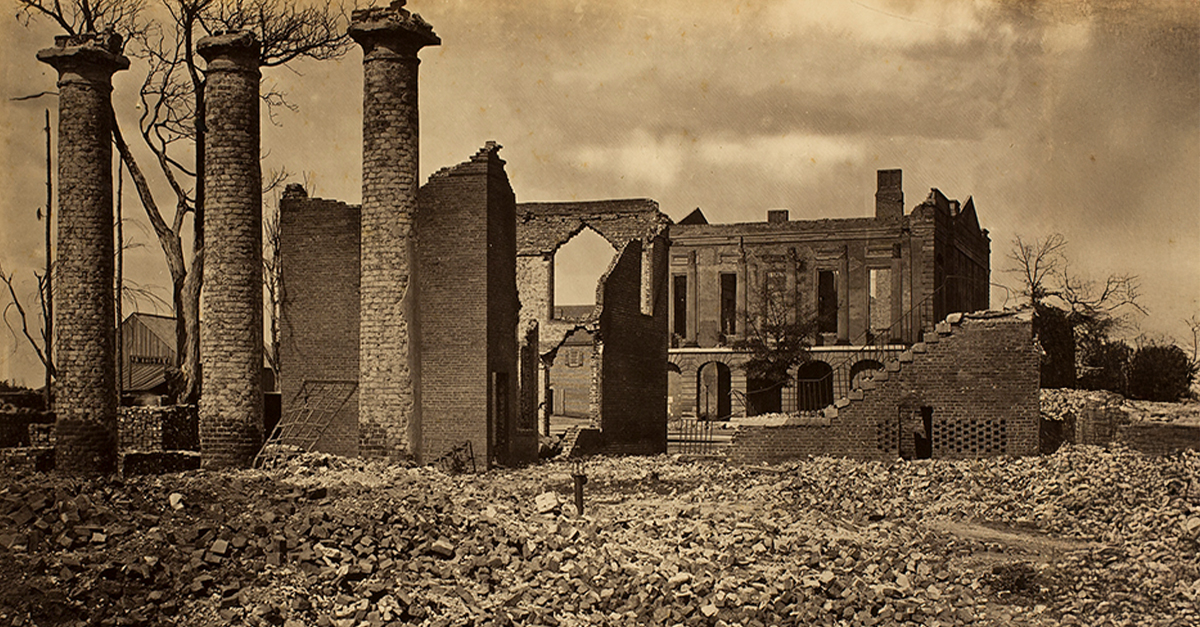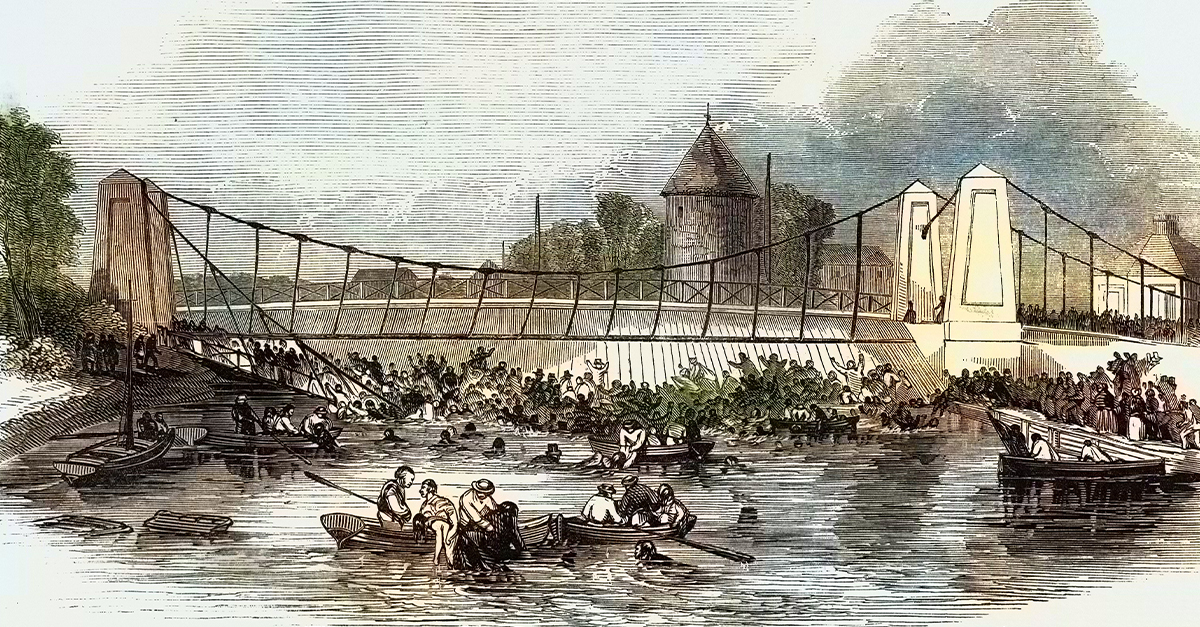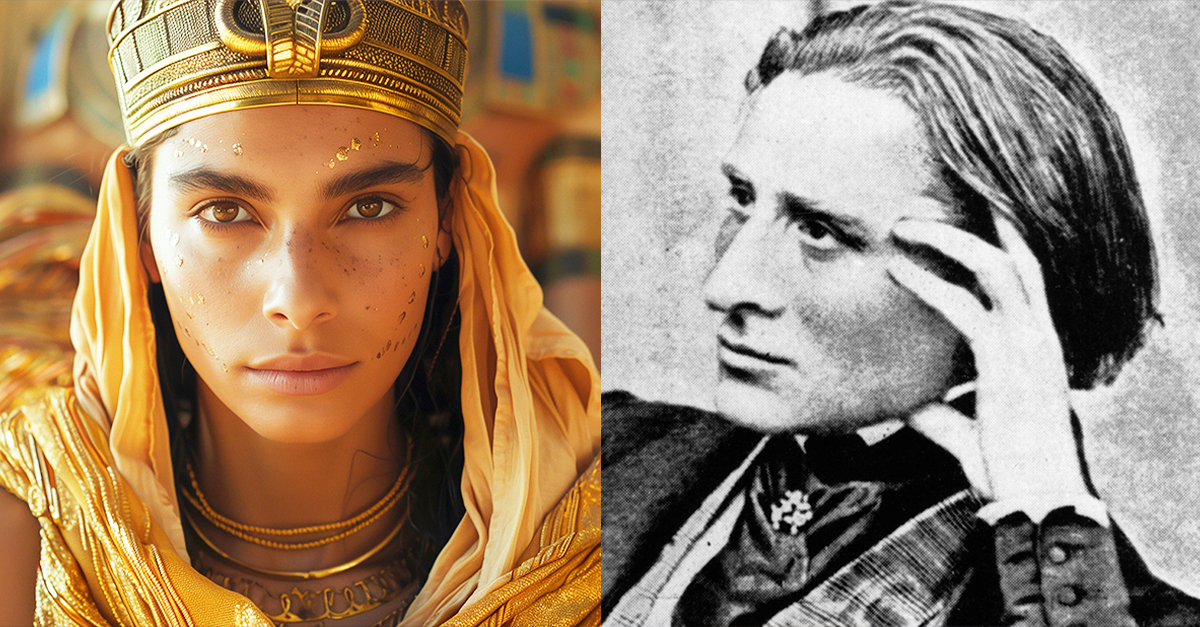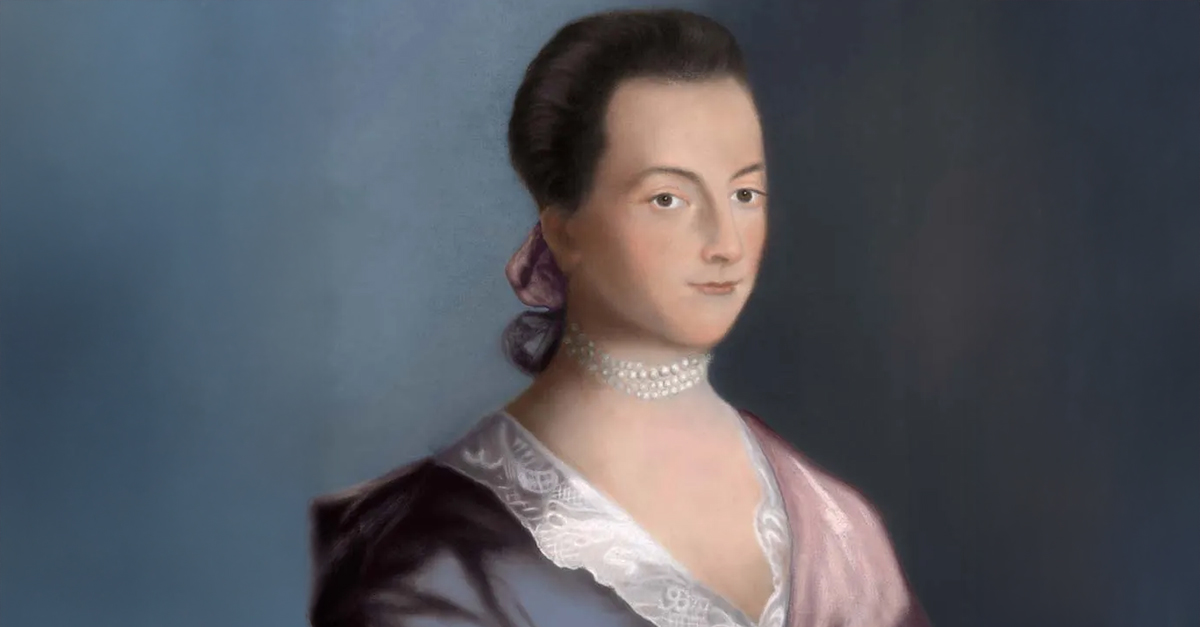The Story Behind The Nickname
You might have heard the term “Typhoid Mary” before. Like “Patient Zero”, it usually refers to someone responsible for spreading a disease to other people. But Typhoid Mary was a real person, and her story is a pretty sad one.
“Typhoid” Mary Mallon
Mary Mallon was born in Ireland in 1869. She emigrated to America in 1884, at the age of 15, and found work as a maid. Mary lived with her aunt and uncle in New York City and eventually became a cook for rich families in the area.
Looking For A Better Life
Like many poor Irish, Mary moved to the United States seeking a better life. The Great Famine in Ireland in the mid-19th Century spurred many to board ships and seek their fortunes across the Atlantic Ocean.
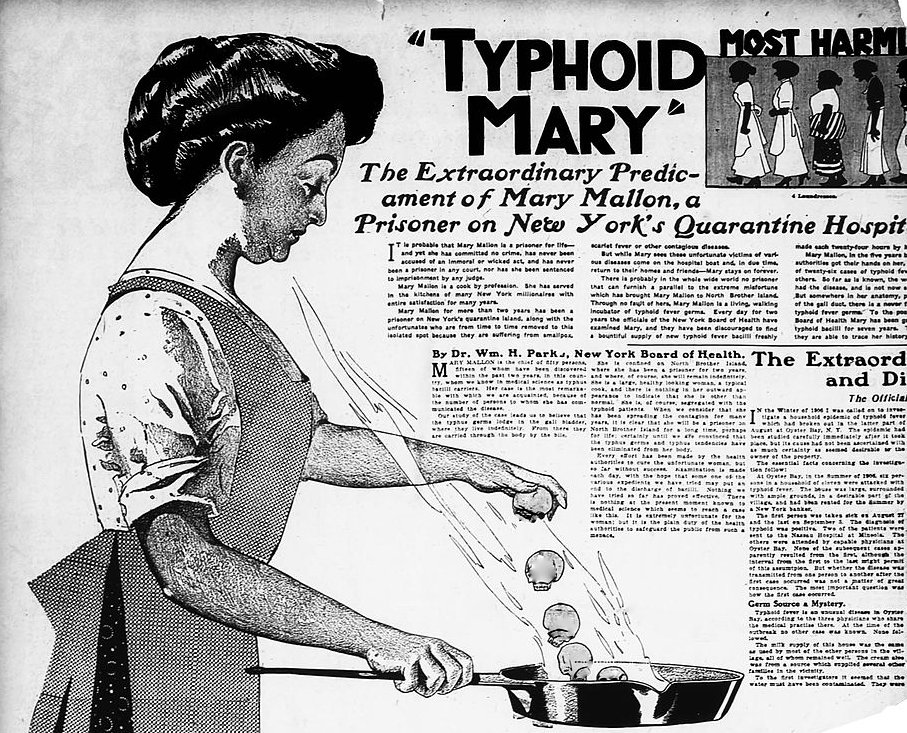 Unknown Artist, Wikimedia Commons
Unknown Artist, Wikimedia Commons
What Is A “Typhoid Mary”?
The reason you may be familiar with this term is that after the sad case of Mary Mallon, the term “Typhoid Mary” became a catchphrase for people who unknowingly spread disease or misfortune to others.
Typhoid Fever, Briefly
Typhoid fever is a serious disease that develops primarily in the gastrointestinal system. It can cause vomiting, diarrhea, and rose-colored skin rashes. Typhoid spreads easily in environments with poor sanitation or poor access to clean drinking water and, in severe cases, can be fatal.
There’s Something About Mary
Mary Mallon was what is referred to as an “asymptomatic” carrier of a disease. She was infected with the bacteria that causes typhoid fever, but she did not develop any of the symptoms. Historians believe Mary’s mother was infected while pregnant, and the disease passed on to Mary.
Just Doing Her Job
After her time as a maid, Mary took jobs as a cook in various places in New York. Although no one made the connection right away, typhoid fever seemed to follow her. The outbreaks were investigated, but never attributed, at least not right away, to Mary, as she would leave once the disease manifested.
Mamaroneck, New York
Mary’s first job as a cook was in Mamaroneck, New York. Mamaroneck is a small town in Westchester County, NY. Within two weeks of Mary getting her job in the town, residents began showing symptoms of Typhoid Fever.
Manhattan
Mary’s next position took her to the island of Manhattan to work for an affluent family. Not long after starting her employment, members of the family developed fevers and diarrhea. She changed jobs and worked for a local lawyer, leaving after several people in the house became ill.
From Manhattan To Tuxedo Park
Mary worked for a number of other families between 1904 and 1907. Either family members or members of the staff all contracted Typhoid Fever. An investigation of an outbreak at her Tuxedo Park employer placed the blame on an infected laundry worker, but nothing was ever proved.
Mary Moves To Oyster Bay
Banker Charles Eliot Warren employed Mary as a cook in 1906. The family lived in a house in Oyster Bay, NY that summer, during which time six of the 11 people in the household came down with typhoid fever. The disease was not common in Oyster Bay, prompting an investigation into the outbreak.
The Landlord Finds… Nothing
At first, it was assumed that the disease had been contracted from something in the plumbing. The landlord of the house the Warrens rented performed tests on the water in the pipes, faucets, toilets, and even the cesspool, but found no trace of the typhoid bacteria.
 Nancy Porter Productions, Typhoid Mary (1993)
Nancy Porter Productions, Typhoid Mary (1993)
The Investigation Begins
After the plumbing came back (mostly) clean, the owner of the house hired sanitation engineer George Soper to investigate the outbreak. As the disease was primarily known to affect lower-class people in unsanitary conditions, it seemed strange that a rich family in a clean summer home would contract the fever.
 Nancy Porter Productions, Typhoid Mary (1993)
Nancy Porter Productions, Typhoid Mary (1993)
The Park Avenue Outbreak
Soper investigated typhoid outbreaks in the state and found an ongoing one in the home of the Bownes family in New York City. Mary Mallon was still their cook at the time. Realizing that Mary fit the description of the similarly-afflicted Warren family’s cook, he confronted her about spreading the disease.
 Nancy Porter Productions, Typhoid Mary (1993)
Nancy Porter Productions, Typhoid Mary (1993)
An Unhappy Mary
We have to remember that the idea of someone carrying a disease but not showing any symptoms was unheard of in the early 20th century. Mary claimed that typhoid was everywhere, and became quite upset with Soper when he accused her of causing the outbreaks. Mary refused to give samples for Soper to test.
 Nancy Porter Productions, Typhoid Mary (1993)
Nancy Porter Productions, Typhoid Mary (1993)
George Soper’s Report
After this encounter, Soper traced Mary’s employment history and found that typhoid outbreaks seemed to follow her around. In 1907, Soper published a report of his investigation in the Journal of the American Medical Association. It was here that Mary’s asymptomatic nature started to come into focus.
 Nancy Porter Productions, Typhoid Mary (1993)
Nancy Porter Productions, Typhoid Mary (1993)
Into Quarantine
Despite being in “perfect health”, NYC health investigators came to realize that Mary was indeed spreading typhoid fever to the families for whom she had worked. Dr Sara Josephine Baker and five police officers forced Mary into an ambulance and took her to Willard Parker Hospital.
 Nancy Porter Productions, Typhoid Mary (1993)
Nancy Porter Productions, Typhoid Mary (1993)
At The Hospital
Still swearing she was not transmitting the disease, Mary was restrained to a bed and forced to give samples upon entering the hospital. Huge numbers of typhoid bacteria were found in her samples.
 Nancy Porter Productions, Typhoid Mary (1993)
Nancy Porter Productions, Typhoid Mary (1993)
Sentenced To Quarantine
In March 1907, Mary was sentenced to quarantine on North Brother Island, located in New York’s East River. While on the island, Mary continued to provide test samples to doctors. Some suggested that she have her gallbladder, seen as the source of the bacteria, removed. Mary refused, still not believing she was a carrier.
 Gary Sanchez Productions, Drunk History (2013-2019)
Gary Sanchez Productions, Drunk History (2013-2019)
And Then Came The Nickname
George Soper’s article attracted a great deal of attention to Mary. She was one of the first instances of someone carrying a disease but not suffering from its effects. It was during this time of attention that Ms Mallon picked up the unfortunate name that would follow her for the rest of her life: Typhoid Mary.
 Gary Sanchez Productions, Drunk History (2013-2019)
Gary Sanchez Productions, Drunk History (2013-2019)
Appeal To The Law
Soper approached Mary about a book he was planning to write about her case. He offered to share the royalties with her to help her support herself. Mary angrily refused. She hated the nickname she’d been given, and even sought legal help, unsuccessfully, to fight its use in media reports.
 Gary Sanchez Productions, Drunk History (2013-2019)
Gary Sanchez Productions, Drunk History (2013-2019)
A Harsh Sentence
Mary underwent many different medications during her time on the island, along with the continual sample-taking. Some doctors believed that quarantining her was too harsh and that some education about her condition could help her return to society and keep those around her safe.
 Gary Sanchez Productions, Drunk History (2013-2019)
Gary Sanchez Productions, Drunk History (2013-2019)
Almost Three Years
After two years and 11 months, Mary was released from quarantine. It was decided that disease carriers should not be quarantined, but Mary had to make assurances that she would take steps to not infect those around her, including no longer working in her chosen profession as a cook.
 Gary Sanchez Productions, Drunk History (2013-2019)
Gary Sanchez Productions, Drunk History (2013-2019)
Five Years Of Struggle
Mary found employment as a laundry worker, but the job paid substantially less than that of a cook. An accident on the job caused a severe wound on Mary’s arm, and the subsequent infection left her unable to work for almost six months.
 Gary Sanchez Productions, Drunk History (2013-2019)
Gary Sanchez Productions, Drunk History (2013-2019)
No Longer Mary Mallon
After a number of difficult years, she began working as a cook again, using fake names to disguise her true, and well-known, identity. Virtually everywhere she worked suffered outbreaks of typhoid.
 Gary Sanchez Productions, Drunk History (2013-2019)
Gary Sanchez Productions, Drunk History (2013-2019)
George Soper Returns
Considered an expert on Mary’s case, George Soper was called back in to investigate the various outbreaks. It was not until Mary took a job at Sloane Hospital for Women that he was able to get a good description of her and realized that Mary was back to her old profession of cooking.
 Gary Sanchez Productions, Drunk History (2013-2019)
Gary Sanchez Productions, Drunk History (2013-2019)
On The Run
Mary realized that both Soper and the police were on to her, and she fled New York City for Long Island. But even as she tried to escape capture, police caught up with her and Mary returned to the familiar quarantine of North Brother Island.
 Gary Sanchez Productions, Drunk History (2013-2019)
Gary Sanchez Productions, Drunk History (2013-2019)
In For The Long Haul
Imagine having to spend the rest of your life in one place, with no choice in the matter. This is what happened to Mary Mallon when she was sentenced to her second quarantine. From 1915 to 1938, Mary lived and worked on North Brother Island, with only a few trips to the mainland allowed from time to time.
 Gary Sanchez Productions, Drunk History (2013-2019)
Gary Sanchez Productions, Drunk History (2013-2019)
Kinder Treatment
10 years after Mary’s second quarantine began, Dr Alexandra Plavska set up a lab on the island and offered Mary a job. Little else is known about Mary’s second quarantine, but it seems that she was at least given things to do, rather than being strapped to a bed and having samples taken.
 Gary Sanchez Productions, Drunk History (2013-2019)
Gary Sanchez Productions, Drunk History (2013-2019)
In The End
Mary spent the rest of her days on North Brother Island at the Riverside Hospital. She suffered a stroke in 1932 that paralyzed half of her body, and in 1938 succumbed to pneumonia at the age of 69. Her ashes were buried in Saint Raymond’s Cemetery in the Bronx.
 Gary Sanchez Productions, Drunk History (2013-2019)
Gary Sanchez Productions, Drunk History (2013-2019)
Mary Mallon’s Legacy
One of the reasons Mary’s story is so important is that it brought to light the fact that someone could be infected with a disease but show no outward, or inward, symptoms. Mary never developed a fever or rashes. For most of her life, she never believed that she was a carrier.
 Gary Sanchez Productions, Drunk History (2013-2019)
Gary Sanchez Productions, Drunk History (2013-2019)
Medical Technology
Part of the problem of Mary’s dubious legacy is that the medical technology of the time just wasn’t good enough. There were no antibiotics to fight the disease. Experts claimed that the bacteria resided in her gallbladder, and suggested it be removed, but that operation was quite often fatal. There were no good options.
 Gary Sanchez Productions, Drunk History (2013-2019)
Gary Sanchez Productions, Drunk History (2013-2019)
How Many People Did Mary Affect?
Poor record keeping, and Mary’s refusal to cooperate, make it difficult to ascertain just how many people she infected with typhoid fever. Some estimates claim that at least 120 people caught the disease from Mary, and others say that there may have been up to 50 fatalities as a result of her contact.
Not Just Medical Lessons
Mary’s case also brought to light how carriers of diseases were treated. Some argue that if Mary was actually aware of the effect she was having on those around her, the resulting fatalities could be considered grounds to label her a murderer. If she didn’t know, however, the ethics of her arrest raise some questions.
Other Asymptomatic Carriers
Other “healthy” typhoid carriers were identified in the first part of the 20th century in the wake of Mary’s case. Tony Labella, an Italian immigrant, “Typhoid John”, a guide in the Adirondacks, and restaurateur Alphonse Cotils were all among asymptomatic transmitters of the disease.
What Did We Learn From Mary?
Mary Mallon was the first known case of an asymptomatic disease carrier. This was a vitally important discovery in understanding the way that diseases spread. Before Mary’s case, it was assumed that it took a visibly sick person or an unclean environment to transmit bacteria.
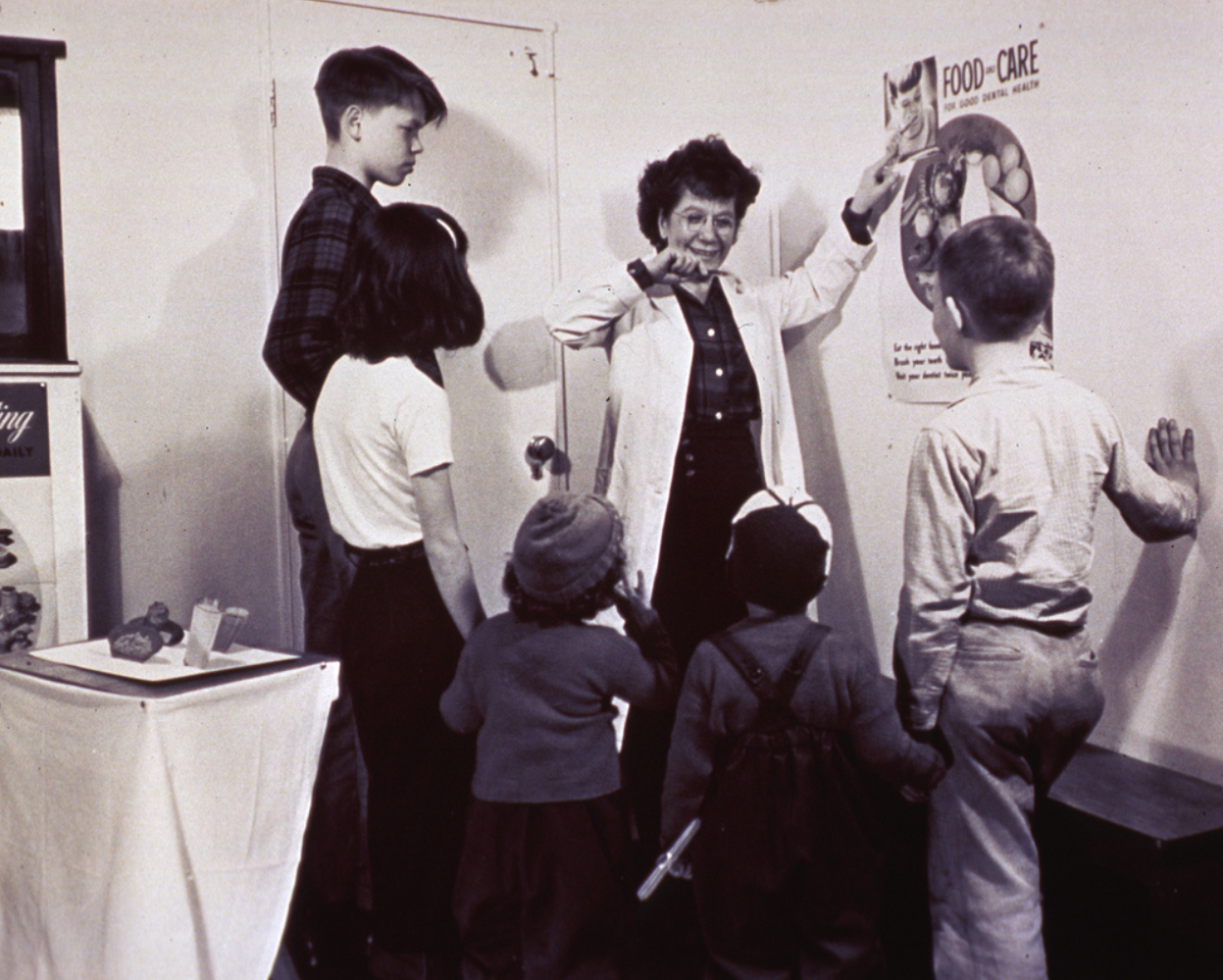 National Library of Medicine, Picryl
National Library of Medicine, Picryl
Personal And Social Responsibility
Mary’s case also highlighted something that became very important during the COVID-19 pandemic. What is the responsibility that an individual has to their community, and vice versa? Teaching Mary to manage her condition was a precursor to the masking and social distancing many of us experienced in the early 2020s.
Cultural Legacy
Both Mary and her nickname have inspired stories and songs by numerous artists. Marvel Comics features a disease-carrying super-villain named Typhoid Mary. A butcher knife from Mary’s days as a cook is an illness-spreading supernatural artifact in the television series Warehouse 13.
Mary’s Story
A fictionalized account of Mary’s initial spread of the disease was portrayed on the television series The Knick. Actor Melissa McMeekin played Mary as a cook unknowingly spreading typhoid to wealthy families.
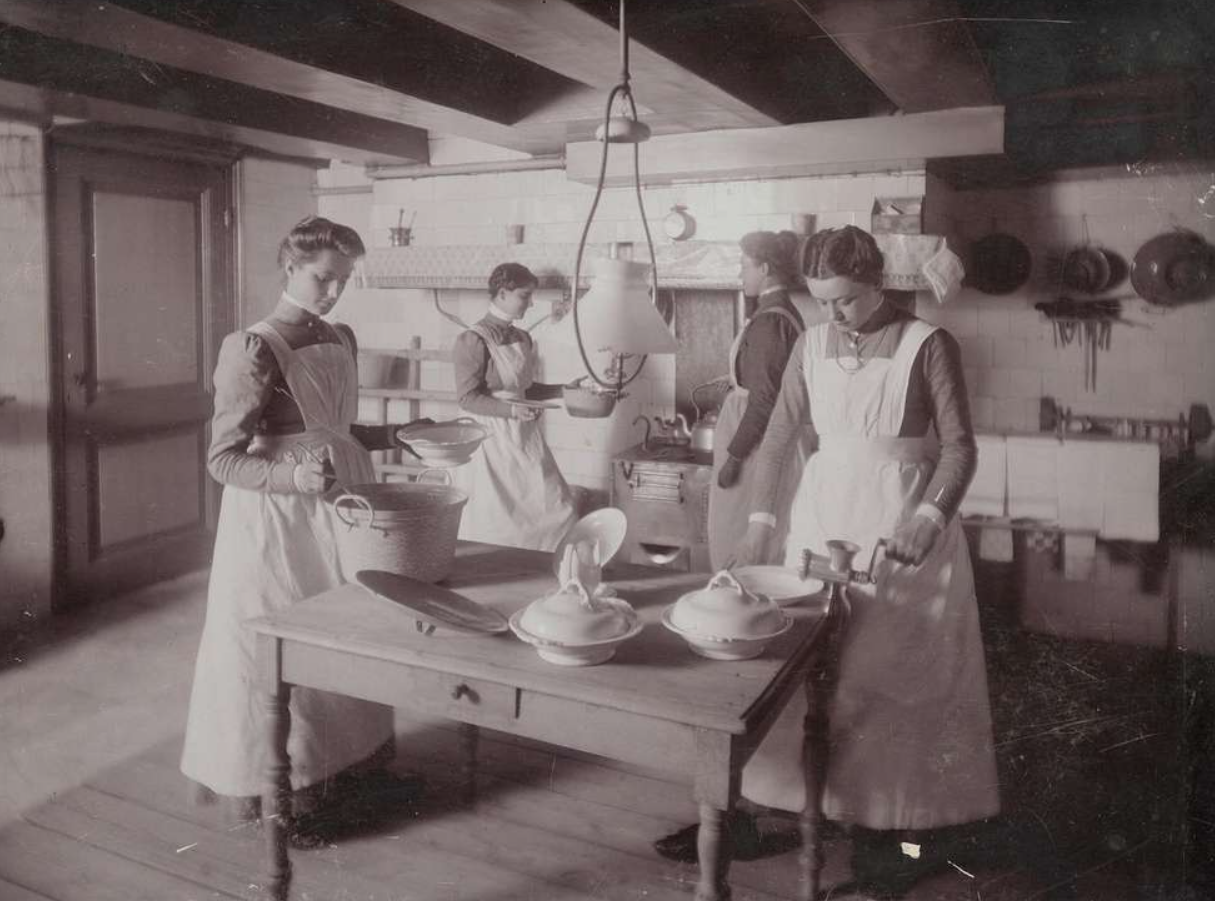 Stadsarchief Amsterdam, Picryl
Stadsarchief Amsterdam, Picryl
Just Mary
With all the negative associations that the name Typhoid Mary carries, it’s easy to forget that Mary Mallon herself was not a bad person. The lack of knowledge and information available at the time meant that no one, not Mary or her doctors, could have predicted her effect on the people around her.

